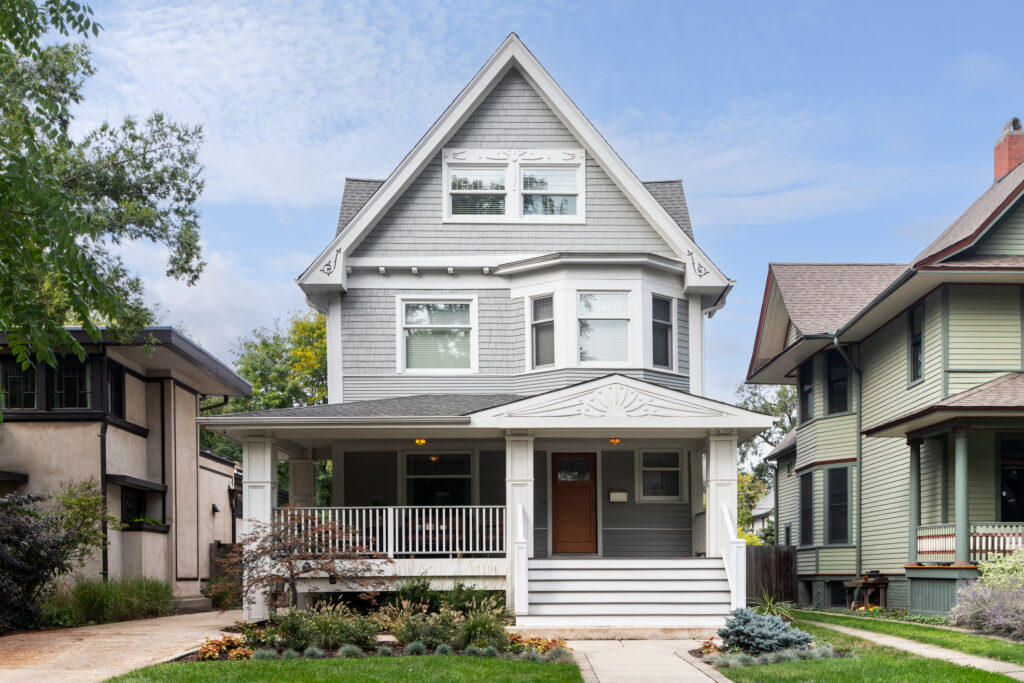Newsmaker Q&A: Jessica Dunker

SUZANNE BEHNKE May 1, 2018 | 5:51 pm
4 min read time
990 wordsAll Latest News, Arts and Culture, Business Record InsiderThe health of the restaurant industry depends on what area of the state you are talking about. For intsance, Elkader in northeast Iowa is going to be a very different situation than the Court Avenue District that brims with options these days.
Larger population centers have seen a lot of growth since the recession, says Jessica Dunker, president and CEO of the Iowa Restaurant Association. The group is dedicated to promotion and education of the restaurant and beverage industry across the state.
We checked in with Dunker on a wide range of trends and issues that are affecting bars, eateries and restaurants after last talking with her in 2011 when the industry was reeling from the Great Recession, and coping with changes in smoking laws, minimum wage increases and expanded retail sales of alcohol.
These days the low unemployment rate and government regulation rank as major concerns for owners of establishments, Dunker says.
Here are key takeaways from a recent conversation with Dunker.
What’s the general state of Iowa’s restaurant business these days?
“There is a big difference depending on what part of the state you are in,” Dunker said. Most of the growth that we see happens in high population areas like Des Moines and Cedar Rapids, where some vibrant food scenes have emerged, thanks to an improving economy and easy access to capital. In some cases, restaurants that opened to fanfare and high expectations have not been able to make it because of too many seats in some of those high-population areas.
“We are experiencing a little bit of recalibration,” Dunker said. “We have overbuilt for demand.”
She continued: “Everyone says they want that thriving independent culinary culture, but you’ve got to create that situation in your downtown.”
The association does not track the number of seats available in Greater Des Moines, but anecdotally the sense is the industry overbuilt in recent years.
There are 6,200 businesses in the industry in the state, and it is a $4.4 billion economic force.
What happened in 2009 to the industry?
“The industry bottomed out in 2009,” Dunker explained. “What you saw whas a perfect storm in 2009 of increased wages quickly — we are an industry quickly affected by that — and the smoking ban. Patrons went where they could still smoke and eat and drink. … What we saw was adjustment at that time period in the border and smaller communities and a lot of growth like Des Moines, Cedar Rapids and Iowa City. Because capital was easy to get, it’s a little more complicated. A bunch of new restaurants are opening, but you’ve got to have the population and income base to get people coming back.”
What are some of the changing dynamics in the restaurant and beverage industry?
Dunker says millennials are a driving force for what is happening in the industry, which encompasses eating and drinking establishments but also any spot with prepared food for sale such as convenience stores and grocery stores. What types of restaurants are growing and being successful. The industry is clicking along at 3 percent growth each year ever since 2009. Revenue has been going up, Dunker says, “but not necessarily to those traditional table service restaurants. We have to remind people to be a patron at those places.”
What are some factors to be aware of in the Des Moines area?
Dunker explained one frustration has been that businesses and workplaces have made it too easy for employees to stay in for lunch with commissaries and strong menus just steps away from a desk. “This has created a really difficult situation,” she said.
One outcome of that has been food trucks are not popping up in downtown Des Moines during workdays as you might expect. “Food trucks are leaving. It’s a hard business to make money in. Because of seasonality, because we have not created a downtown daytime culture of getting out of your office and going for lunch.”
Downtown Des Moines may seem to be thriving with new eateries, but it’s not necessarily true, Dunker says, with few business owners seeing more profit. Construction, road closures, parking and the popular Court Avenue Hy-Vee — “the truth is that it’s a food court with a grocery store attached,” Dunker says — have all been factors. “Downtown has just been a difficult place to be.”
Dunker says the association has been working with the city of Des Moines on parking.
What’s going on outside of downtown?
“You’ve seen some really interesting and diverse restaurant openings that are out in Ankeny or out in Waukee,” Dunker says. “It’s a recalibration. … What does it mean to be part of the Des Moines restaurant scene? It’s becoming more about the greater restaurant scene.”
How is technology changing the industry?
“We have changed a lot of our service models,” Dunker explains. Technology is helping out with addressing labors costs and shortages by making more aspects automated. For instance, at a Chipotle, Pancheros or McDonald’s, the customer may order for themselves, seat themselves and clean up afterward. The quality of food at such places has also improved, she says.
What about the minimum wage increases that cropped up in the past?
“We don’t actually fight them. The market is working. … Dishwashers in downtown Des Moines are making $12 an hour. …. Raising the minimum wage in the state is not a big deal to us. What is always a big deal to us is the tip wage. Can we flat-rate that thing?” Dunker says.
What about the unemployment rate? How is that affecting businesses and the industry?
Dunker says the eating and beverage industry is expected to see 1,000 new jobs a year for 10 years. She sees that as a real concern and challenge with the unemployment rate for the state at under 3 percent. Two vital population groups helping fill service jobs are immigrants and an older workforce of retired baby boomers.










